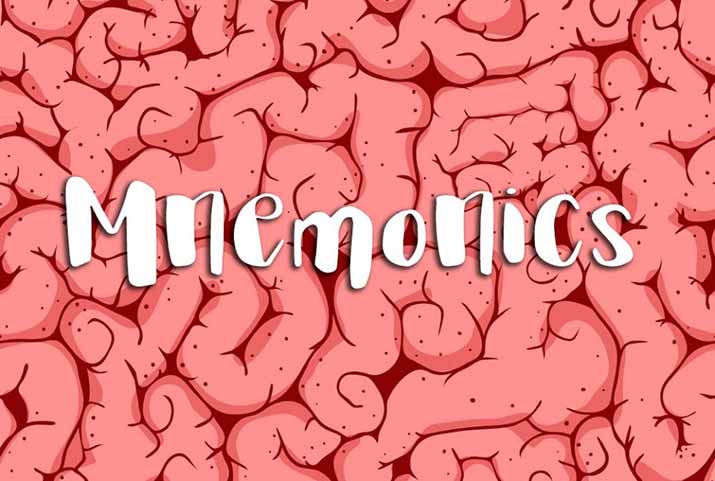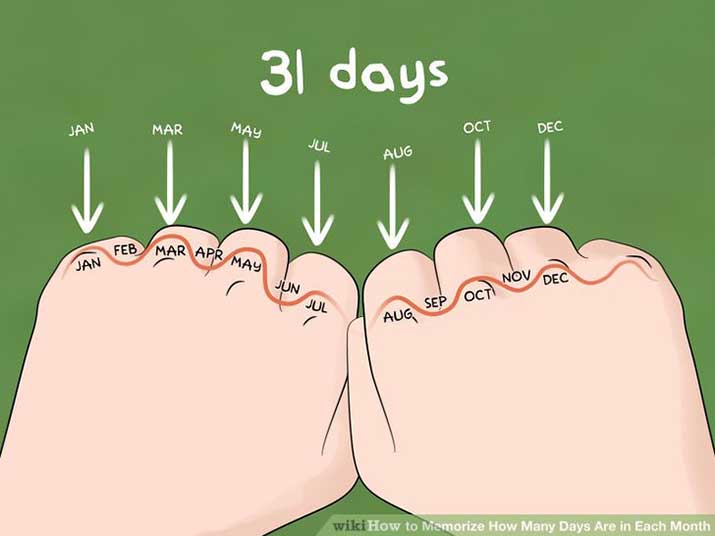Hack your memory with mnemonics
You're human - an emotional creature. By attaching meaning to dry information, your forgetfulness could be a thing of the past.

With every new day comes a new piece of information to memorise; a new test to see how far our memories can be stretched. Often, the information we need to retain is devoid of emotion, like a string of numbers or the spelling of bureaucracy.
But we humans are emotional creatures, and we latch onto meaningful experiences- so it’s no wonder we struggle to retain those dry but necessary facts and figures.
Revising information is the best way to encourage long-term storage, but that’s not the only thing you can do to lock down your learnings. There’s a range of techniques available to aid memorisation, referred to as mnemonics (how’s that spelling for a memory challenge?). The purpose of mnemonics is to inject dry information with a bit of emotion, to make it easier to remember. Check out some of the common mnemonic types that have proved effective for all types of of learners.

Letters and words
Chances are, you know and regularly use a mnemonic that involves letters and words. An example of an acrostic mnemonic is “Never Eat Soggy Weetbix”, which recalls compass directions in clock wise order- north, east, south and west. An acronym mnemonic is perfect for remembering instructions, such as how to treat a sprain, using RICE – Rest, Ice, Compress, Elevate.

Music and rhymes
It’s amazing how we can remember lyrics from decades ago, but can’t remember what we ate for lunch. That’s the power of music—it’s an emotional experience that deeply embeds itself within our minds. So if you’ve got a tricky batch of facts to absorb, set them to the tune of a song and you’ll be reciting them in no time. Rhymes are also very effective for remembering information, such as the very well-known “I before E except after C”.

Chunking
When you’re faced with a long string of numbers, you can group them into chunks that are a lot more memory-friendly. This is what we do with phone numbers and bank numbers, which are essential to know, but difficult to recall. A group of 3–4 numbers will be easier to visualise, so keep those chunks short and sweet.

Keyword method
The keyword method is especially helpful for learning another language. For example, the Spanish word for cat is gato, which resembles the word gate, so to help you remember, you could visualise a cat sitting on top of a gate. Keywords will vary from person to person, depending on how your brain forms associations.

Method of loci
One of the oldest mnemonic devices is the loci method, which requires you to link information with a certain space that you know well by memory, such as your house. A great opportunity to use the Loci method is when you turn up at the grocery store without your shopping list. Visualise yourself walking through your house, through the kitchen, through the laundry. What’s missing from your fridge—orange juice? What do you usually have in your laundry cupboard—washing powder? Humans have a better ability to remember spaces rather than facts, so it can be a great help to mentally ‘walk past’ objects and spaces that will jog your memory.

Physical
Associating information with a physical object, even with your own body, can really help with information recall. A great example of this is using your knuckles to remember how many days in a month (each knuckle is 31 days, each dip between knuckles is 30 days [or 28]), or using your fingers to multiply numbers by 9 (eg. 9 x 4, hold down finger #4 of 10, you’ve got 3 fingers on the left and 6 on the right, the answer is 36).
You don’t need to wait until a big event, such as an exam, to utilise a mnemonic—they’re just as useful in everyday life. For example, you’ll be amazed by how much time you’ll save by memorising your credit card number, especially if you make a lot of online transactions. So next time you encounter a memorisation challenge of any size, give one of these clever techniques a go.
Browse thousands of courses from leading Australian universities.
Or complete the form on this page to chat to an advisor about study options.



